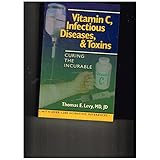The Vitamin C Experts
- Linus Pauling
- Robert Cathcart, III
- Steve Hickey and Hiliary Roberts
- Thomas Levy
- John Ely
- Sherry Lewin
- Fred Klenner
- Irwin Stone
- Sydney Bush
Linus Pauling
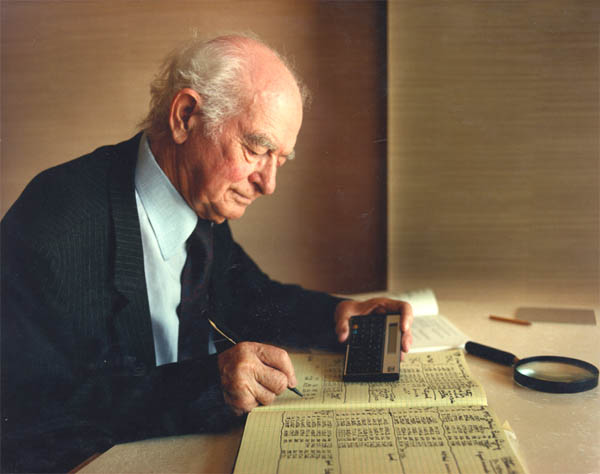 Linus Pauling, PhD,
A Decade After His Last Interview, His Reputation Continues to
Grow...
Linus Pauling, PhD,
A Decade After His Last Interview, His Reputation Continues to
Grow...
He has been given credit by many people for almost single handedly making vitamin C the most popular and widely used nutritional supplement in the world and for helping to significantly advance the fields of clinical nutrition, primary prevention, and "orthomolecular" medicine (a term he coined)."
- Linus Pauling's Last Published Interview (ION 1994)
- The Scientific Achievements of Dr. Linus C. Pauling
- The LINUS PAULING PAPERS from the National Library of Medicine
-
LINUS PAULING AND THE RACE FOR DNA - 50-YEARS LATER...

-
WHY LINUS PAULING IS SMILING:
Low Blood Vitamin C Concentrations in the Older British Population Strongly
Predict Mortality...
UK STUDY: ANTIOXIDANT VITAMINS AND MORTALITY IN OLDER PERSONS...RESULTS: Strong inverse relationship for blood ascorbate (vitamin C) concentrations with all-cause and cardiovascular disease mortality, which were only marginally reduced after adjustment for confounders or supplement use. Those in the lowest fifth (< 17 micromol/L) had the highest mortality, whereas those in the highest fifth (> 66 micromol/L) had a mortality risk nearly half that (hazard ratio = 0.54; 95% CI: 0.34, 0.84). Similar results were found after the exclusion of those subjects with cardiovascular disease or cancer at baseline (hazard ratio = 0.51; 0.28, 0.93). In fully adjusted models, there was no evidence for an influence of alpha-tocopherol (vitamin-E), beta-carotene, or retinol (vitamin-A) on total mortality. Dietary antioxidants measured by the food-frequency questionnaire were not associated with all-cause or cardiovascular disease mortality.
High Vitamin-C Linked to Reduced Stroke Risk...
 "The risk of stroke was 70% higher among those in the lowest quartile for serum vitamin C than among those in the highest."
"The risk of stroke was 70% higher among those in the lowest quartile for serum vitamin C than among those in the highest."Experimental Science: Supplements Slow Aging in Rats...
 "Ames et. al. want to help us remain as healthy and as young as possible, right up until the end. That goal fits nicely with the vision of the man whose name hangs over the door of the institute where Hagen now works. Two-time Nobel prize-winner Linus Pauling predicted decades ago that free radicals, or other oxidants, were causing many of our problems, including age-related declines. That's why he vociferously pushed for vitamin C, a natural antioxidant.
"Ames et. al. want to help us remain as healthy and as young as possible, right up until the end. That goal fits nicely with the vision of the man whose name hangs over the door of the institute where Hagen now works. Two-time Nobel prize-winner Linus Pauling predicted decades ago that free radicals, or other oxidants, were causing many of our problems, including age-related declines. That's why he vociferously pushed for vitamin C, a natural antioxidant.But like most of us, he hated the thought of getting old. I know that because a number of years ago I celebrated his 90th birthday with him. I followed him around for three days, from his fabulous estate on California's Big Sur coastline to Stanford University, where he taught a graduate seminar on chemistry.
While delivering his lecture, the 90-year-old Pauling forgot something he was about to say. That happens to all of us from time to time, but the grand old man of science looked terrified as he stood speechless in front of his young audience. They probably figured he was getting senile.
Pulling himself together, he finally said, "I guess you're all wondering what we're doing over at the institute."
He picked up a piece of chalk and wrote a formula on one of three huge blackboards that blanketed three walls in the lecture hall. For nearly an hour, he expanded on the formula until it filled all three walls. Then he turned to the students, who sat with their mouths hanging open in absolute awe.
"Any questions?" he asked.
Not a one.
Now there's a man who knew how to stay young.
- Linus Pauling Vindicated
-
 Ten Years Since the Death of Linus Pauling
Ten Years Since the Death of Linus Pauling
A Tribute to Linus Pauling: Vitamin C, he was right all along...
- Pauling/Rath Unified Theory of Cardiovascular Disease
- Summary: of the Unified Theory
Testimonial
My name is Pauline (Sarah) Sowders. I am 62 years old and had quadruple heart bypass surgery March 2002. Had incredibly difficult time recuperating. Disagreed with my doctor on treatment regarding statin drugs. My problems with statins were muscle cramps, severe joint pain, stomach pain, depression and nerve problems which finally caused me to take a medical leave from my job this past March. Some time ago a friend recommended taking the following supplements instead of prescription drugs:
- Fish Oil Pills 1,000 mg - 6/day
- Red Yeast Rice 600 mg - 4/day
- Vitamin E 400 mg - 1/day
- Folic Acid 400 mg - 2/day
I felt no significant change.
Sept 1st of this year I found the following statement on a web site (can't remember where but thank GOD!). "Try this - guaranteed to lower cholesterol at least 18% in six weeks." 6000 mg. Vitamin C, 6000 mg L-Lysine, 200 mg CoQ10.
I began taking this combo in addition to the Fish Oil etc. on Sept 12 of this year. I'm not sure if the fish oil regimen in combination with the vit. C made a difference or if it was just the Vitamin C regimen. But, after only two weeks I began feeling like a new person. For the first time in years I wanted to do things that I had to force myself to do only a few days before. I began cleaning, cooking, sewing, working in the yard - just could not figure out how to work everything into each short day. I actually enjoy getting up in the morning.
I found the Heart Technology web site a few days after I discovered this vitamin C stuff works. Really was having trouble swallowing 24 vitamin pills per a plus a blood thinner and baby aspirin. My regimen is now as follows: (so simple)
- Two scoops Heart Tech in A.M., 2 fish oil capsules, 1 CoQ10,
- Two scoops Heart Tech in P.M., 2 fish oil capsules.
Have stopped the blood thinner and baby aspirin. (NO MORE BRUISES! THANK YOU LORD!)
My blood test results from May 2004 and October 2004 follow. (LDL dropped from 203 to 161 and total cholesterol dropped from 290 to 248).
I had been off statin drugs for approximately 3 months before each test. The October test was done after being on vitamin C for one month. Both my doctor and I were thrilled about the latest test results, until he discovered that I was not taking any prescription drugs, at which time he said, "You're playing Russian roulette you know." Maybe so, but I doubt it. I feel wonderful and the proof is in the puddin.
"This pooled study shows health benefits at >700 mg vitamin C from supplements compared to no supplementation. This ABSOLUTELY disproves the RDA and the false idea that there is a 200 mg daily limit on health benefits!!!!!!!!!!!!!!" - B Sardi
Urgent Bill Sardi Vitamin C RDA Letter to USA Food and Nutrition Board ...
Over 100 MEDLINE Abstracts That Relate Antioxidant Intake to Heart Disease...
10-YEARS AGO: THE LINUS PAULING LECTURES ON VITAMIN C AND HEART DISEASE...
Steve Hickey and Hiliary Roberts
World's Leading Vitamin C Scientists Blast the Puny Vitamin C RDA...
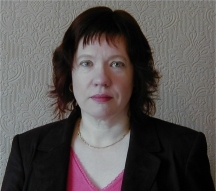
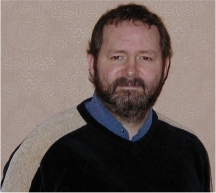
Download
'Ridiculous Dietary
Allowance'
The printed version is in press and will be available shortly for about $15.00.
Drs. Hickey and Roberts Rebut Misleading Information on the Properties of Vitamin C...
The dual-phase pharmacokinetics of vitamin C are described by the dynamic flow model [3,4]. Low gram-level intakes of ascorbate, leading to blood plasma levels below 70 µM/l, have a half-life of 840 days. Higher gram-level intakes have a plasma half-life of 30 minutes [3]. A large oral dose raises blood plasma levels briefly: they reach a peak after two to three hours, before decaying back to baseline. Frequent repeated doses allow sustained high plasma levels of about 250 µM/l [4,5].
Douglas and Hemilä reviewed intakes that transiently raise plasma ascorbate levels above 70 µM/l. A single dose does not raise the median level [6,7]. Daily supplements would, thus, not increase disease resistance to any great degree [3,4]. Single or double doses daily will not increase background plasma levels, regardless of the magnitude of the dose [6,7]. Since plasma ascorbate is at background level for the majority of the day, effects will be minimal.
There is widespread confusion about nutritional and pharmacological levels of supplementation [3]. Linus Pauling, typically, described nutritional gram-level doses able to provide a degree of disease prevention [8]. By contrast, pharmacological doses used for treatment are, at minimum, an order of magnitude larger and involve frequent doses. The doses should be at intervals of three hours or less [3]. Treatment doses are described by Cathcart's paper on titration to bowel tolerance [9]. To treat the onset of a cold, the therapy is perhaps a minimum of 10 g of oral ascorbic acid, followed by at least 2 g each hour [3,4].
Douglas and Hemilä give a misleading impression by not making it clear that the doses they consider are not pharmacological. They claim that the results of one study, giving an 8-g dose at the start of symptoms, are tantalizing and deserve further assessment. However, once this single dose has been excreted, the protective effects will be lost. During illness, ascorbate is depleted rapidly and higher oral intakes are tolerated up to 200 g per day [9]. It would be surprising if this 8-g dose had a large effect.
Studies on ascorbate require appropriate doses. Douglas and Hemilä have only confirmed that 60 years of vitamin C research has largely been wasted because of confusion between nutritional and pharmacological intakes, and because of a misunderstanding of the pharmacokinetics. It is essential that high-dose studies take into account ascorbate's dual-phase pharmacokinetics. The dosing regime should allow sustained high plasma levels to be achieved. The claim that vitamin C cannot prevent or cure the common cold is both premature and unwarranted.
Steve Hickey
Manchester Metropolitan University
Manchester, United Kingdom
E-mail: radicalascorbate@yahoo.com
THE VITAMIN C CONTROVERSY IS RESOLVED...
ASCORBATE...
This book presents a new model, describing the action of vitamin C in health and disease. It demonstrates conclusively that the establishment has misinterpreted the evidence, potentially resulting in epidemic levels of avoidable disease. [More]
GOVERNMENT SCIENTISTS NO LONGER DEFEND THEIR DATA, NOW THEY VIOLATE SCIENTIFIC PROTOCOL
Please Get Involved!
Letter to Congress (Road map for letters to your local newspaper editors)
Is the Recommended Dietary Allowance for Vitamin C Too Low?...
THE HICKEY LETTERS TO AUTHORITIES RESPONSIBLE FOR THE U.S. RDA
ASCORBATE: The Science of Vitamin C
To be blunt — the NIH gave a dose of vitamin C, waited until it had been excreted, and then measured blood levels.

 NEW BOOK
by Dr. Steve Hickey and Hilary Roberts
NEW BOOK
by Dr. Steve Hickey and Hilary Roberts
The failure of the medical establishment to perform critical follow-up experiments may have resulted in much suffering and countless deaths. As Dr Hickey says, "If this book doesn't shock you, you haven't understood it". For this reason, the book ASCORBATE lists the essential experiments necessary to restore respectability to the scientific evaluation of vitamin C. If even a few of the hypotheses are confirmed, readers will understand why double Nobel Prize winner Dr Linus Pauling was prepared to stake his scientific reputation on ascorbate.
Excerpt:
"Large-scale double-blind mega-studies are the current fashion in medicine. The assumption is made that by increasing the number of subjects, the work somehow becomes more valid. Regrettably, these studies are borderline science, as a large-scale study is difficult to repeat and replication is at the core of the scientific method. Of particular concern are those studies that are so expensive that only pharmaceutical companies are ever likely to perform them. The way studies are financed and the potential source of any experimental bias or error become more important with larger studies, as they are more difficult to replicate. Replication reduces the possibility of bias. A large-scale study giving positive results is less convincing than, say, three smaller, equally positive studies by independent researchers, in different institutions, separately funded and using dissimilar methods."
Hickey is now challenging authorities to explain or stand behind their previous work. The Hickey findings are surprising, and so far his effort is being ignored by the National Institutes of Health and the Linus Pauling Institute, and of course, the Media.
THE HICKEY LETTERS TO AUTHORITIES RESPONSIBLE FOR THE U.S. RDA
Klenner
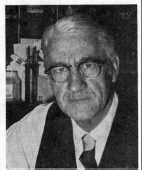
Observations On the Dose and Administration of Ascorbic Acid When Employed Beyond the Range Of A Vitamin In Human Pathology By Fred Klenner, MD.
1949 - A YEAR IN MEDICINE WHICH WILL LIVE IN INFAMY....
The Treatment of Poliomyelitis and Other Virus Diseases with Vitamin C
Robert Cathcart, III, MD
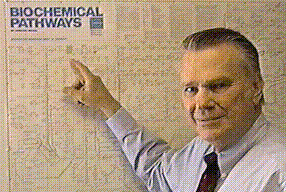 Ascorbic Acid Orally - NOT for IV!
Ascorbic Acid Orally - NOT for IV!
Dr. Cathcart's
- VIDEO: Intravenous Sodium Ascorbate: Preparation & Use
- FAMOUS PAPER: Vitamin C, Titrating to Tolerance...
- HOME PAGE
Tom Levy

Interview with Dr. Thomas Levy...
Vitamin C, Infectious Diseases, and Toxins
DOSE DEPENDENT, VITAMIN C CURES DEADLY INFECTIONS, NEUTRALIZES TOXINS...
READ LEVY VITAMIN C BOOK REVIEW BY A. SAUL
WATCH DR. LEVY'S AMAZING VITAMIN C PRESENTATION
[Part 1] and
[Part 2]
and
[Part 2]
THE SAFETY OF HIGH DOSES OF VITAMIN C...
John Ely and the Glucose-Ascorbate Antagonism Theory
Ascorbic Acid and Glucose
The (western diet) meals competitively inhibit insulin-mediated active transport of AA into these cells, resulting in low intracellular AA levels, low HMP shunt, and cell dysfunction (i.e., leukocytes don't attack tumors or pathogens, fetal cells divide too slowly, etc.); this is the "Antagonism"...
The GAA theory gives rise naturally to "Aggressive Glycemic Control" (AGC) as a modality that, properly used, appears to have much value against many disorders as stated above ." - Ralph Lotz
Almost 2000 years ago in the time of Galen, it was observed that tumors grew poorly or not at all in underfed (i.e., low BG) animals. In 1972, Ely deduced and related to Linus Pauling a theoretical reason why clinical trials of AA against colds and cancer might fail because of the high BG levels in the affluent nations. The theory is relevant to aging, birth defects, cancer, cardiovascular disease (cvd), infections, etc.
It is called the "Glucose Ascorbate Antagonism" (GAA) and is important in the "small" dose range (AA~10g/d or less). It says that certain cell types such as leukocyte and fetal have intracellular AA levels that are "pumped up" largely by insulin ~50 times higher than serum AA levels in the surrounding blood. This occurs if BG is in the low range that was normal until the 1900's and is still seen today where the primitive (unrefined) diet prevails, i.e., 50-90 mg% two hours postprandial (Ely 1996; Chatterjee and Bannerjee, 1979, Table 1). ...
Ely/Krone Essential Nutrient Theory (ENT) of Aging..
Irwin Stone's Entire Book Now Posted
 Now Posted:
Irwin Stone's 1972 book: The Healing Factor
Now Posted:
Irwin Stone's 1972 book: The Healing Factor
Forewords by Linus Pauling and Albert Szent-Gyorgyi...
IRWIN STONE SAYS NO!
After 40 years research, Irwin Stone unfolds his startling conclusion that an ancient genetic mutation has left the primate virtually alone among animals in not producing ascorbic acid (Vitamin C) in his own body. By treating it as a "minimum daily requirement" instead of the missing metabolite it really is, we are living in a state of sub-clinical scurvy whose symptoms have been attributed to other ailments. The answer is to change our thinking about Vitamin C and consume enough to replenish this long lost "healing factor." Stone illustrates, with massive documentation, Vitamin C's remarkable ability to fight disease, counteract the ill effects of pollution and prolong healthy life -- easily and inexpensively!
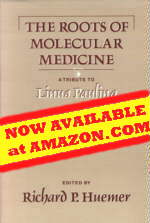 SCURVY, THE COSMIC CONNECTION
SCURVY, THE COSMIC CONNECTION
Nature developed ascorbic acid to save the living process from extinction. This same procedure occurred many times in subsequent evolutionary crises, so that ascorbic acid became, in a sense, the favorite evolutionary life saver."
Eight Decades of Scurvy. The Case History of a Misleading Dietary Hypothesis...
Sherry Lewin
The Rapid Loss of Vitamin C In Water
An important contribution from Dr. Lewin's lab is the measurement of the rapid degradation of vitamin C in water. This quick loss of vitamin C (almost 50% in four hours) must be accounted for during vitamin C research. The following graph represents the amount of vitamin C in solution versus time in hours.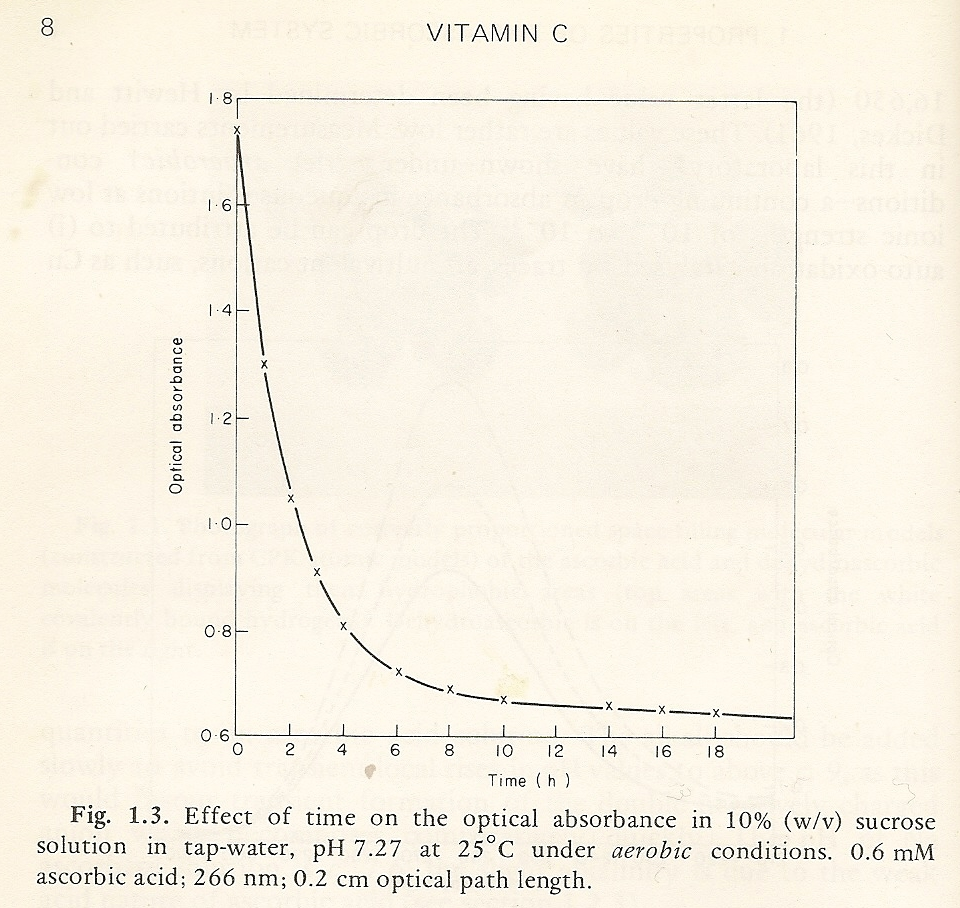 The rapid loss in vitamin C reminds us of of the Hickey/Robert's predicted 30 minute half life in the blood stream.
The rapid loss in vitamin C reminds us of of the Hickey/Robert's predicted 30 minute half life in the blood stream.
Lewin's Molecular Models
 Sherry Lewin's Molecular Models
Sherry Lewin's Molecular Models
As you look at these pictures of vitamin C models from the Sherry Lewin 1976 book Vitamin C: Its Molecular Biology and Medical Potential, note how the ascorbate is the "hat" that fits on many different organic molecular "heads."
For example, when ascorbate (vitamin C) binds with adrenaline (noradrenaline) it prevents what would otherwise be a rapid breakdown of this hormone. When it binds with a cation of histamine, it fits like a glove, and this may explain why a nasal drip can be stopped within five minutes of ingesting high-dose ascorbic acid.
There is a picture of the arginine "guanidinium group" bound with ascorbate.
Sydney Bush
Dr. Sydney J Bush. PhD. DOpt. (IOSc. London)

BREAKTHROUGH: RETINAL PHOTOS CONFIRM VITAMIN C PILLS CAN REVERSE ARTERY DISEASE...
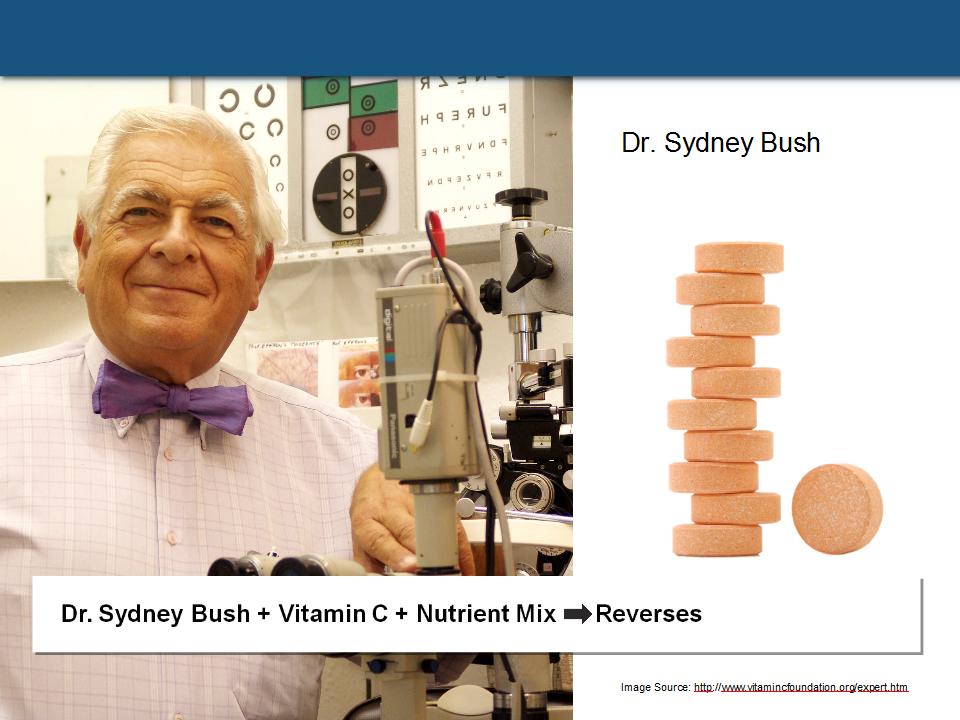
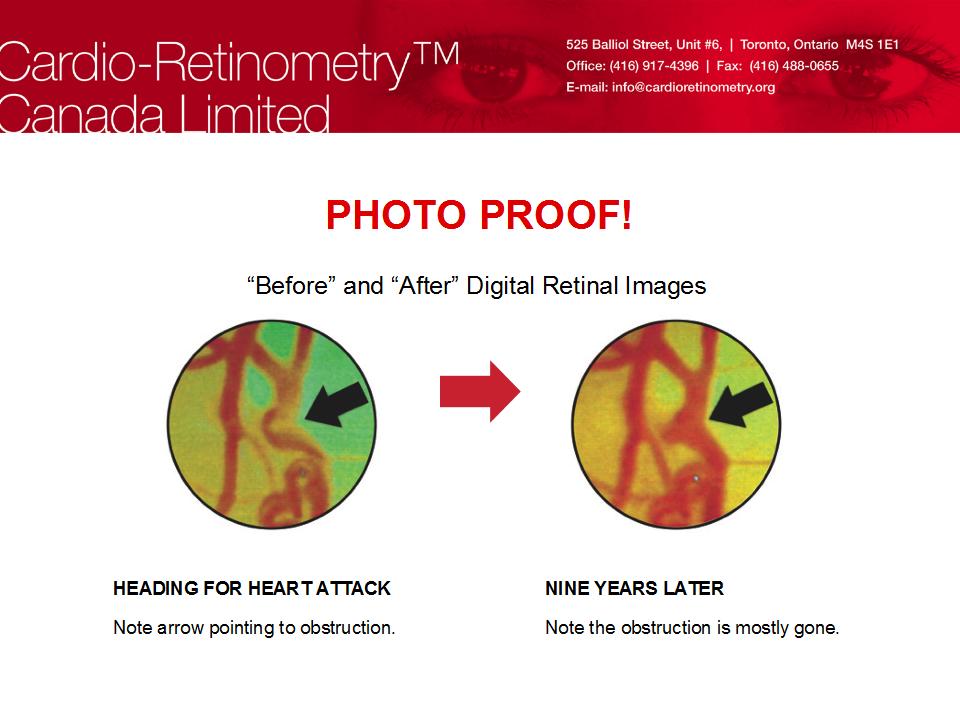
 Purchase Sydney Bush's New Book - Now On Sale
Purchase Sydney Bush's New Book - Now On Sale
Dr. Sydney Bush's passionate tome provides a wealth of information about Vitamin C. Dr. Bush is an optometrist who discovered that the eyes are not only the window to the heart, but they can be used to monitor reversal of heart disease.. He (as have many other eye doctors) has been able to measure the progression of heart disease in the retinal arteries.
It is generally accepted by the medical profession that the atherosclerosis eye doctors observe in their patients cannot be reversed. It is medical dogma that arterial plaques always get worse. Dr. Bush discovered that these plaques can be made to go away quite easily! After Dr. Bush saw that it can and was being reversed in his patients on high vitamin C and other nutrients (The so-called Pauling therapy), he became intrigued, informed and tried to spread the word in Britain. He was amazed by the resistance of the medical profession, National Health Service, etc. Just like Linus Pauling before him, Bush hit a brick wall of disbelief and suppression. Dr. Bush's new book is a product of his studies into vitamin C. It is meant to expose the wealth of knowledge about vitamin C that science has uncovered, but that has been deliberately kept from the medical profession.
PRESS RELEASE: RETINAL PHOTOS CONFIRM VITAMIN C PILLS CAN REVERSE ARTERY DISEASE...
Dr. Bush's Web Sites
BetterHearts.org/CardioRetinometry at the Hull Clinic (UK)...
 Pauling Speaks on YouTube
Pauling Speaks on YouTube